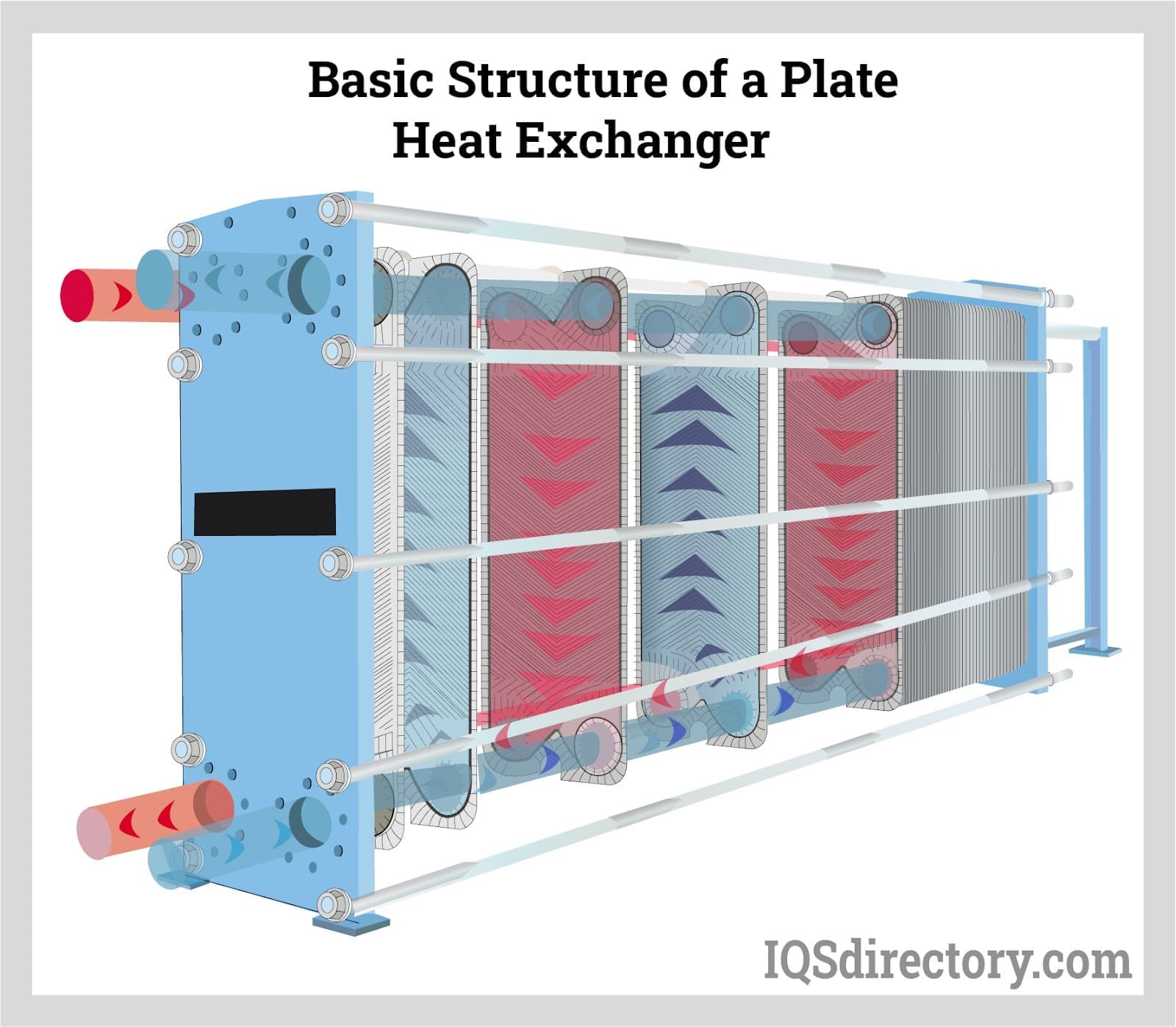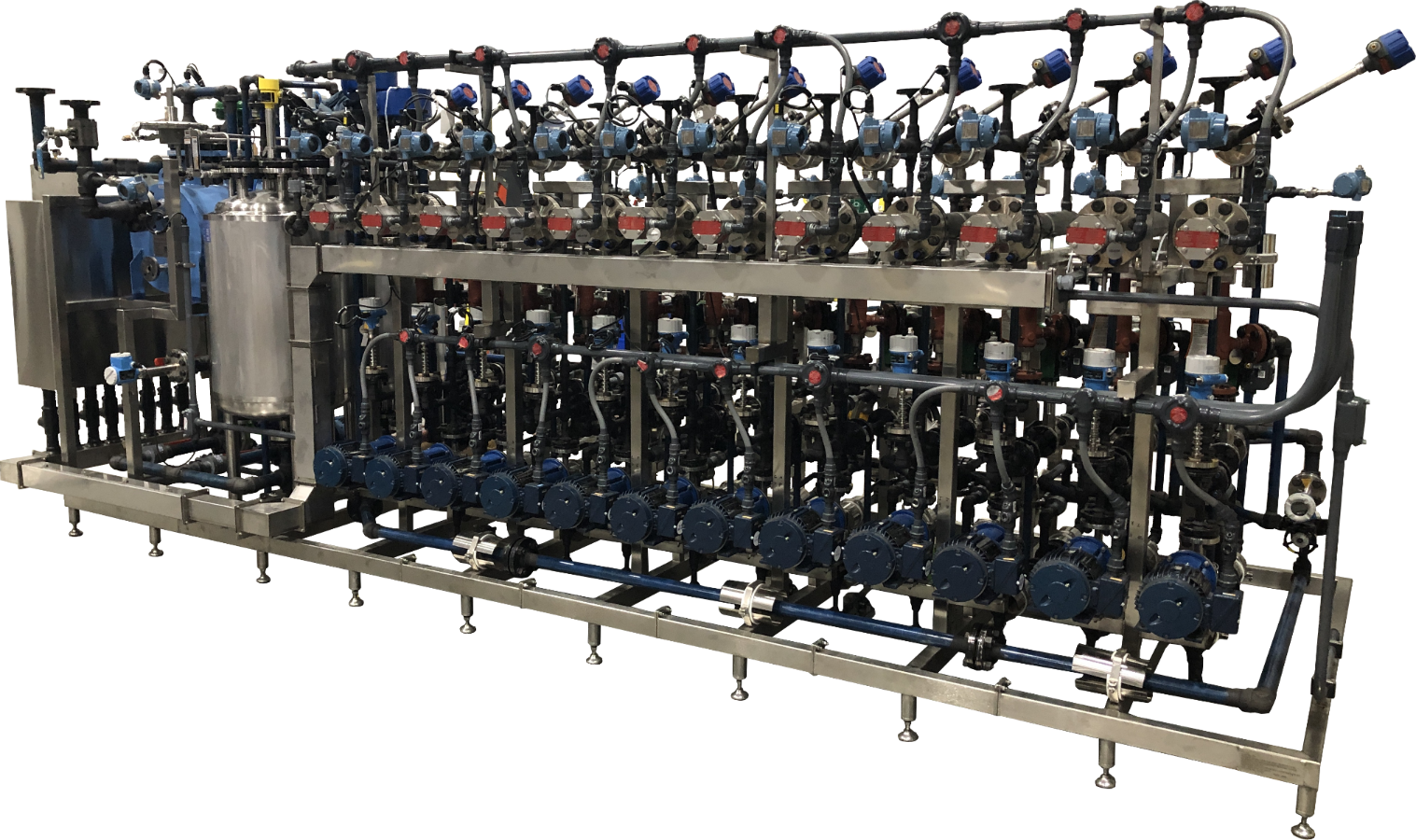Emerging Innovations Shaping the Future of DVS Heat Transfer Systems
Wiki Article
Advancements in Heat Transfer Systems: What You Required to Know for Optimum Performance
Developments in Heat transfer systems are transforming efficiency across various sectors. Advanced materials like graphene and nanofluids promise considerable renovations in thermal conductivity. Meanwhile, the integration of IoT and artificial intelligence uses chances for real-time tracking and improved power performance. However, the landscape of thermal administration is rapidly progressing (DVS Heat Transfer Systems). Comprehending these growths is crucial for attaining suitable system performance and sustainability in the future. What details improvements are shaping this change?Emerging Materials for Enhanced Heat Transfer

Advanced Heat Exchanger Designs
While standard Heat exchangers have served their function in various applications, advanced layouts are now arising to meet the enhancing needs for effectiveness and performance. These ingenious layouts, such as plate, shell-and-tube, and finned-tube Heat exchangers, incorporate enhanced surface area locations and boosted flow patterns to increase thermal transfer prices. Additionally, compact styles enable minimized room requirements without jeopardizing efficiency. Advanced materials, such as composites and corrosion-resistant alloys, additionally boost toughness and efficiency under extreme conditions. Simulation technologies and computational liquid dynamics are progressively used to refine these styles, guaranteeing peak Heat transfer qualities. As industries seek to lessen power usage and optimize result, the adoption of advanced Heat exchanger layouts is essential in achieving these goals.The Function of Nanotechnology in Heat Transfer
Nanotechnology plays a necessary function in enhancing thermal conductivity within Heat transfer systems. By controling materials at the nanoscale, researchers have actually attained substantial renovations in energy effectiveness. These developments not only maximize efficiency but also add to even more lasting power options.Enhanced Thermal Conductivity
Significant developments in thermal conductivity have actually emerged via the application of nanotechnology, reinventing Heat transfer systems throughout different sectors. By including nanoparticles into Heat transfer liquids and materials, researchers have actually achieved amazing boosts in thermal conductivity. These nanoparticles, such as carbon nanotubes, graphene, and steel oxides, enhance the Heat transfer residential or commercial properties as a result of their high surface location and distinct thermal characteristics. The resulting composites exhibit enhanced performance in applications ranging from electronic devices cooling systems to renewable power modern technologies. In addition, the capability to customize the dimension, form, and structure of nanoparticles allows for enhanced thermal administration services. Because of this, nanotechnology remains to play an essential function in the development of more reliable and reliable Heat transfer systems, leading the way for improved commercial applications.
Power Efficiency Improvements

Assimilation of IoT in Heat Transfer Solutions
The integration of IoT in Heat transfer systems presents the execution of clever sensing units that improve operational efficiency. These sensing units make it possible for real-time information surveillance, permitting immediate changes and optimizations. This technical innovation has the possible to significantly boost efficiency and energy monitoring in Heat transfer applications.Smart Sensors Implementation
As Heat transfer systems develop, the integration of clever sensors through the Internet DVS Heat Transfer Systems of Things (IoT) has actually become a transformative strategy. These sensing units enable real-time monitoring of circulation, stress, and temperature prices, boosting system efficiency and reliability. By gathering and transferring data, they facilitate proactive upkeep, minimizing the risk of system failings. Furthermore, wise sensing units add to energy savings by refining functional specifications based upon environmental conditions. Their capability to assess trends and anomalies enables for informed decision-making, making sure peak efficiency of Heat transfer systems. As sectors progressively embrace this technology, the execution of wise sensing units stands to change just how Heat transfer systems are handled, leading the way for greater sustainability and boosted efficiency end results.Real-Time Data Tracking
Exactly how can real-time data keeping an eye on enhance the effectiveness of Heat transfer systems? By integrating Net of Points (IoT) modern technology, Heat transfer systems can utilize continuous data collection from smart sensing units. This real-time monitoring permits prompt analysis of stress, flow, and temperature level rates, enabling operators to recognize inefficiencies without delay. Modifications can be made to optimize efficiency, minimize power intake, and expand equipment lifespan. In addition, anticipating maintenance can be carried out, minimizing unexpected downtime and expensive repairs. The ability to envision efficiency metrics with dashboards improves decision-making, fostering an aggressive method to system monitoring. Ultimately, real-time data keeping track of not just boosts functional performance however likewise adds to sustainability goals within industrial processes.Power Efficiency and Sustainability Trends
Energy efficiency and sustainability fads are reshaping the landscape of Heat transfer systems, driving innovation and conformity across numerous sectors. Organizations are significantly focusing on energy-efficient styles to minimize operational expenses and decrease environmental influences. The assimilation of renewable resource resources is ending up being extra prevalent, enabling Heat transfer systems to operate sustainably while meeting regulatory requirements. In addition, developments in materials and modern technologies promote lower energy consumption and boost total efficiency. Lifecycle analyses are additionally getting traction, allowing companies to examine the ecological impact of Heat transfer systems from manufacturing to disposal. This concentrate on sustainability not only supports company responsibility yet also placements companies competitively in a market where consumers progressively favor environmentally friendly services. Power effectiveness and sustainability remain vital factors to consider for future growths in Heat transfer technology.Developments in Thermal Management Solutions
While the need for reliable Heat transfer continues to climb, technologies in thermal monitoring solutions are emerging to deal with both performance and sustainability challenges. Advanced materials, such as phase modification products and nanofluids, are being established to improve Heat transfer effectiveness - DVS Heat Transfer Systems. These products enhance thermal conductivity and permit far better temperature level policy in different applications. Furthermore, modern technologies like energetic thermal control systems are acquiring traction, making it possible for real-time modifications to take care of Heat flow properly. These systems add to energy cost savings and lower the environmental influence of thermal procedures. Additionally, the assimilation of IoT in thermal management facilitates tracking and anticipating maintenance, making sure enhanced performance and long life of Heat transfer systems. Generally, these technologies stand for considerable strides toward more lasting thermal administration practicesFuture Directions in Heat Transfer Modern Technology
Arising advancements in thermal monitoring services signify a promising future for Heat transfer innovation. Scientists are progressively focusing on creating materials with remarkable thermal conductivity and improved energy effectiveness. Developments such as nanofluids, which have put on hold nanoparticles, offer significant improvements in Heat transfer efficiency. In addition, the assimilation of clever materials that adjust to differing temperature problems is getting traction, permitting more reliable and receptive systems. The surge of additive production techniques is likewise making it possible for the design of complex Heat exchanger geometries that maximize liquid flow. Furthermore, the execution of device knowing algorithms is prepared for to change the optimization of Heat transfer systems, helping with predictive maintenance and performance enhancement. Jointly, these innovations are positioned to change the landscape of Heat transfer modern technologies in numerous sectors.
Regularly Asked Questions

Exactly how Do I Select the Right Heat Transfer System for My Application?
Choosing the appropriate Heat transfer system entails reviewing application needs, including temperature varieties, fluid residential properties, and effectiveness needs. Assessing system kinds, maintenance considerations, and cost-effectiveness likewise plays an essential function in making an educated decision.What Are the Maintenance Requirements for Advanced Heat Exchangers?
Upkeep needs for innovative Heat exchangers normally include routine inspections, checking for leakages, cleansing of surfaces, and assuring ideal circulation prices. Sticking to maker guidelines warranties effective procedure and prolongs the tools's lifespan.
Exactly How Do Ecological Elements Influence Heat Transfer Effectiveness?
Environmental elements substantially influence Heat transfer performance. Variants in air flow, moisture, and temperature impact thermal conductivity and convective Heat transfer, eventually influencing system efficiency and requiring factor to consider during the style and procedure of Heat transfer systems.What Security Criteria Apply to Heat Transfer Systems?
Safety requirements for Heat transfer systems normally consist of guidelines from organizations such as ASME and ASTM. DVS Heat Transfer Systems. These standards address materials, design, and operational methods to guarantee dependability, efficiency, and security against threats in different applications
Exactly How Can I Repair Typical Heat Transfer System Issues?
Fixing common Heat transfer system issues includes checking for leaks, ensuring correct liquid circulation, inspecting insulation honesty, and validating temperature differentials. Determining these elements can help keep system efficiency and protect against more complications.Nanotechnology plays an essential function in improving thermal conductivity within Heat transfer systems. Considerable improvements in thermal conductivity have actually emerged with the application of nanotechnology, reinventing Heat transfer systems across numerous sectors. Advancements in thermal conductivity via nanotechnology have actually led the means for impressive renovations in energy performance within Heat transfer systems. Energy effectiveness and sustainability fads are reshaping the landscape of Heat transfer systems, driving innovation and compliance across different markets. The combination of IoT in thermal administration helps with surveillance and predictive upkeep, making sure optimized performance and long life of Heat transfer systems.
Report this wiki page